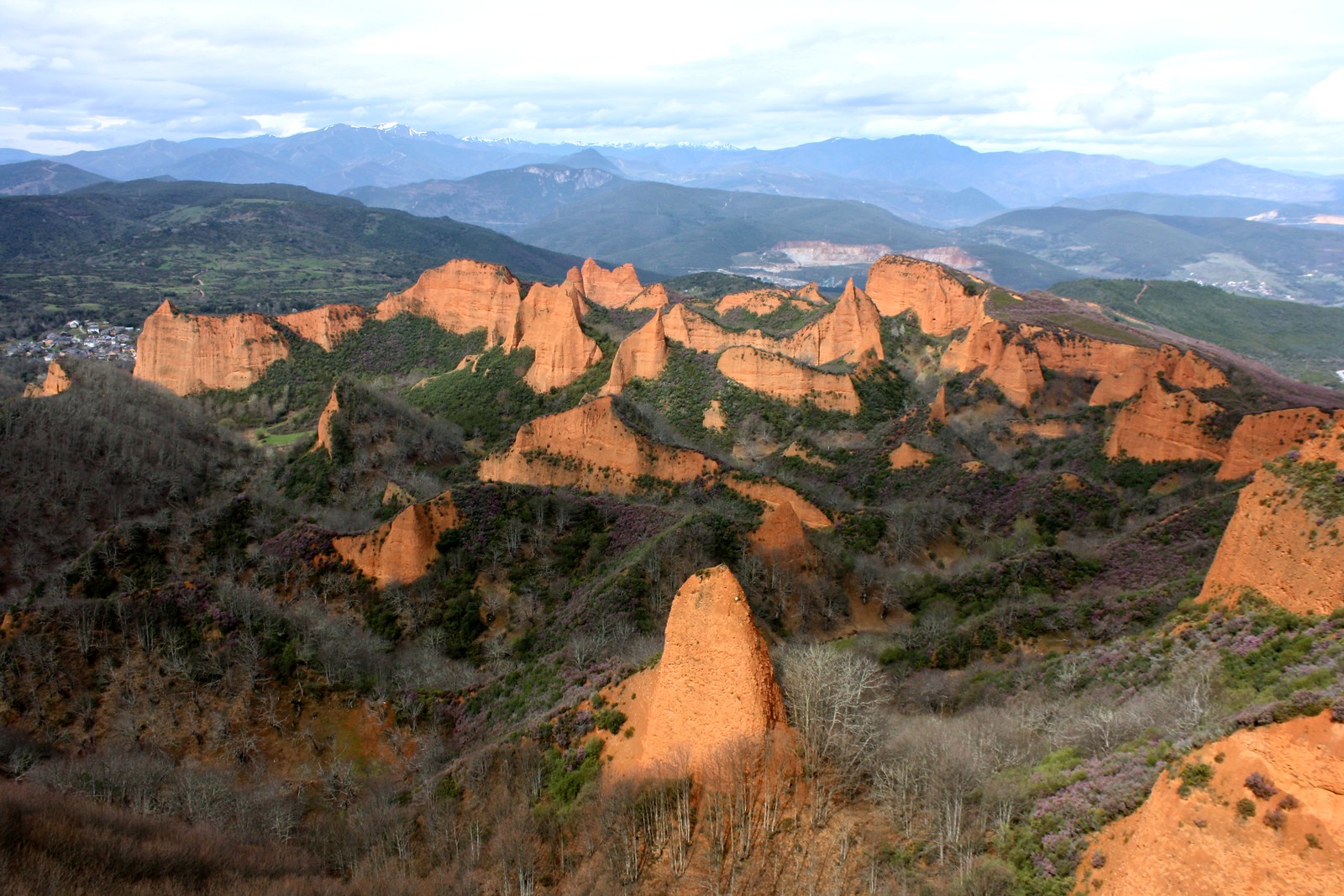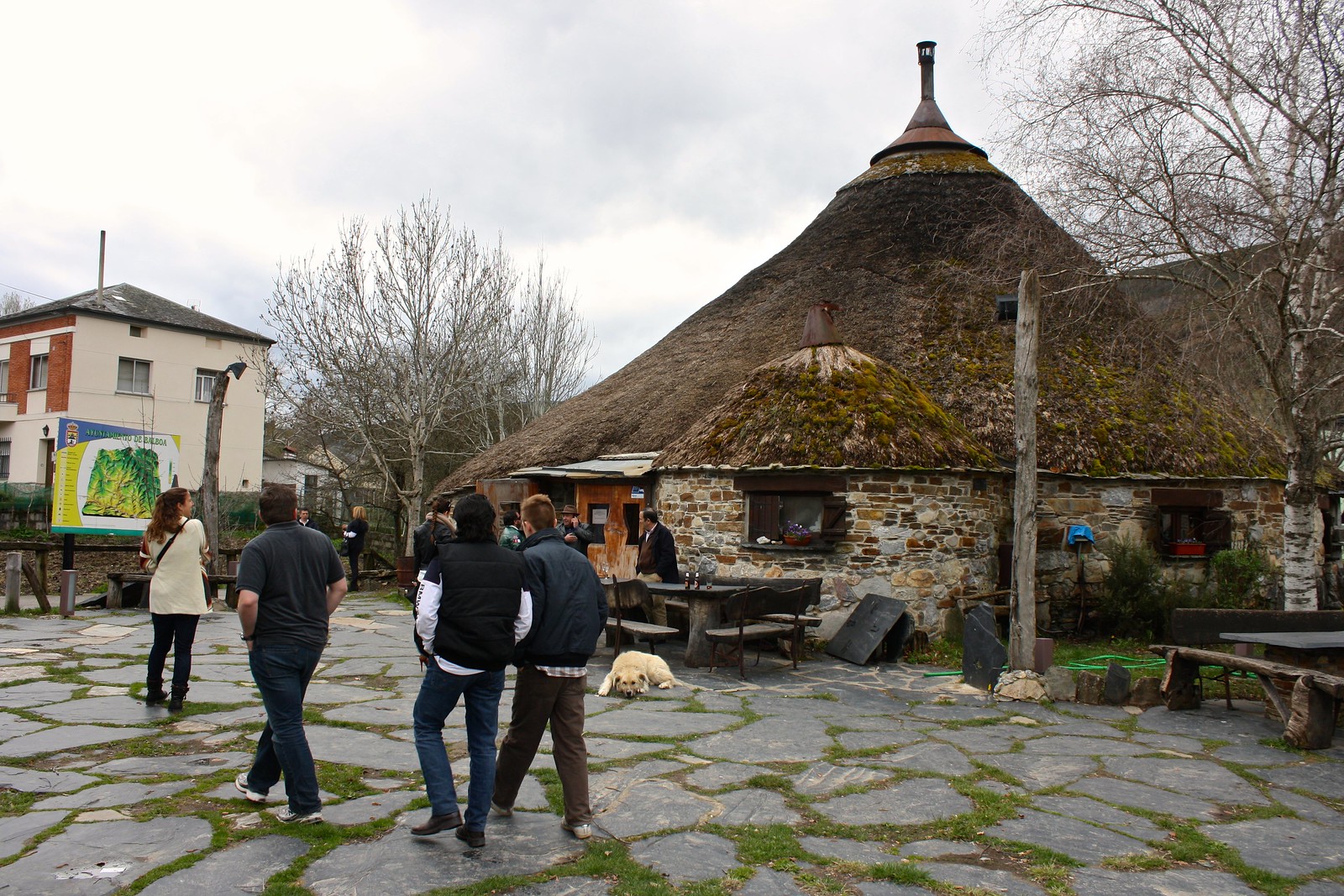Usually when you think of
Roman ruins—in Spain or elsewhere—usually things like crumbling arches, faded mosaics, and fallen-in house walls come to mind. Sometimes there’s a grand
aqueduct, and maybe even an
amphitheater, but all the sculptures, gravestones, and artifacts are on display in a nearby
museum. In any case, you’ll most often see memorials to important dead guys or monumental ruins.
That’s why I was so surprised when I visited
Las Médulas: all that is left of
the largest gold mine in the Roman Empire. Although the modern Spanish word
médula can mean “bone marrow” or “spinal cord,” the name for these mining ruins probably comes from
the Latin metula, the diminutive form of the word
meta, which meant “cone” or “pyramid”—which makes sense given the other-worldly rock formations that make up the ruins.
Hidden away in the rugged Bierzo region in northwesterly
León province, the open-pit mine has sliced through whole mountainsides, leaving the stark orange clay faces we see today. From the
mirador (lookout point), you can almost trace the former swoops and curves of the original hills as they were before full-scale mining was introduced in antiquity.
Once Augustus had incorporated northwestern Hispania into the empire (read: waged wars of conquest), the Romans used Las Médulas as their main source of gold for the next 250 years. Approximately five million Roman pounds were extracted from the area during that time, or
1.6 million kilos of raw gold ore.
So how did they do it? I’m still not very clear on how the process worked myself, but the Romans used the
ruina montium method to get at the area’s alluvial gold deposits. This highly advanced engineering took advantage of the power of water to break down both the topsoil and bedrock to expose gold veins. UNESCO
describes this system:
…water from springs, rain, and melting snow was collected in large reservoirs, which led by a system of well built gravity canals to the mines themselves, over long distances. Galleries were cut into the sterile strata many metres deep that overlay the layers of auriferous conglomerate. When the sluices of the dams were opened, enormous quantities of water flowed into the galleries, which were closed at their ends. The pressure thus built up caused the rock to explode and to be washed away by the water flow, forming enormous areas of tailings, several kilometres in length.
It’s for this intimate look into ancient technology—not the bizarre, wrecked landscapes—that Las Médulas was named a
World Heritage Site for cultural reasons.
On a daytrip here from nearby
Ponferrada with my friend Laura, her Spanish boyfriend, and two other expats, we donned hardhats and descended into one of the ancient tunnels the Romans dug to channel water into the mountains. Walking through this dank, spooky cavern was so surreal: you got to feel the walls that had been carved almost 2,000 years ago and imagine the raw power of rushing water building up pressure to blow out a hillside. It was a sober reminder that the scars from our own open-pit mines to extract copper or coal will be around long after civilization has collapsed.
Apart from taking in the weird views and crawling down into the tunnel, there wasn’t much to do here. The surrounding countryside is really gorgeous, though; when we came at the tail end of winter, the hillsides were covered in pretty purple flowers, and thousands of
fuzzy poky chestnut burrs covered the shoulders of the road leading up to the lookout point.
Sadly, it’s impossible to get here by public transportation; the nearest village is Carucedo but you really need a car to get up to see the vistas or explore the winding landscapes in person.
For lunch, the five of us decided on dining in a
palloza, a traditional round stone hut with a soaring thatched roof (pronounced “pah-YOE-thah” [paˈʎo.θa]). Almost to the border with Galicia, we stopped in the village of Balboa (“good valley” in Galician) but the hut by the river was booked for the entire afternoon. After hopping back in the car, we endured dozens of switchbacks before emerging at the top of a small mountain where another
palloza stood guard.
Although from this quiet, chilly outcropping you could see snow-capped mountains in the distance, the thatched-roof hut held a smoky, wood-fired hearth within. This hut was packed for
la comida but we managed to commandeer some benches. Among the many
raciones (platters) we ordered to share, I loved the one that had various local sausages and cured meats like the
cecina or cured beef so typical in the Bierzo region.
Part of what made me fall in love with Spain in the first place is the rich historical heritage that you can find in nearly every corner in the country—but it’s the long, drawn-out Sunday dinners involving delicious traditional food that have kept me here for nearly two years.
What other kinds of atypical ancient ruins can you think of? Would you make the effort to drive out to see Las Médulas? Comment away in the discussion below!










